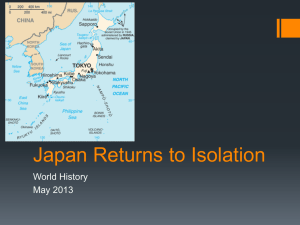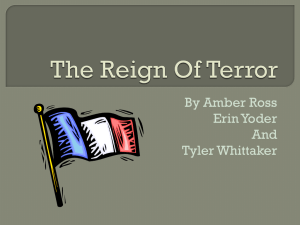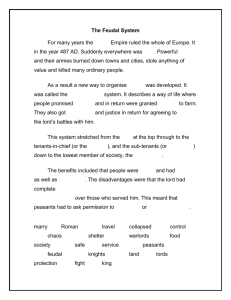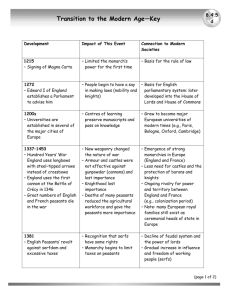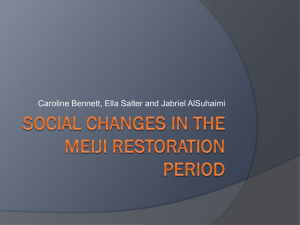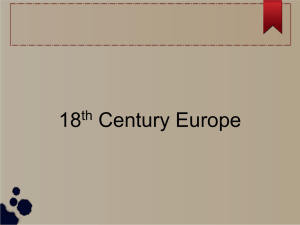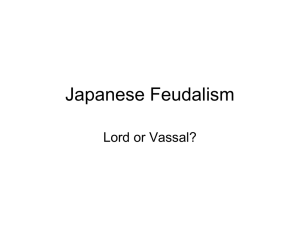Lecture 23 Protests, Rebellion, Mass Hysteria Tokugawa period: 1600-1863
advertisement
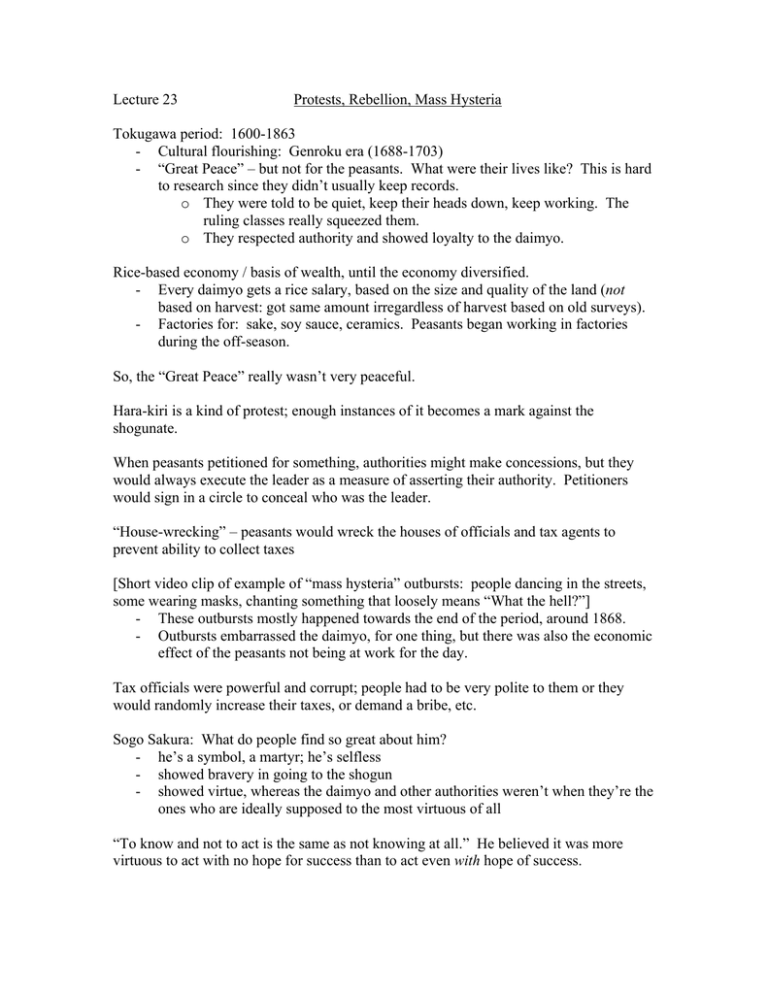
Lecture 23 Protests, Rebellion, Mass Hysteria Tokugawa period: 1600-1863 - Cultural flourishing: Genroku era (1688-1703) - “Great Peace” – but not for the peasants. What were their lives like? This is hard to research since they didn’t usually keep records. o They were told to be quiet, keep their heads down, keep working. The ruling classes really squeezed them. o They respected authority and showed loyalty to the daimyo. Rice-based economy / basis of wealth, until the economy diversified. - Every daimyo gets a rice salary, based on the size and quality of the land (not based on harvest: got same amount irregardless of harvest based on old surveys). - Factories for: sake, soy sauce, ceramics. Peasants began working in factories during the off-season. So, the “Great Peace” really wasn’t very peaceful. Hara-kiri is a kind of protest; enough instances of it becomes a mark against the shogunate. When peasants petitioned for something, authorities might make concessions, but they would always execute the leader as a measure of asserting their authority. Petitioners would sign in a circle to conceal who was the leader. “House-wrecking” – peasants would wreck the houses of officials and tax agents to prevent ability to collect taxes [Short video clip of example of “mass hysteria” outbursts: people dancing in the streets, some wearing masks, chanting something that loosely means “What the hell?”] - These outbursts mostly happened towards the end of the period, around 1868. - Outbursts embarrassed the daimyo, for one thing, but there was also the economic effect of the peasants not being at work for the day. Tax officials were powerful and corrupt; people had to be very polite to them or they would randomly increase their taxes, or demand a bribe, etc. Sogo Sakura: What do people find so great about him? - he’s a symbol, a martyr; he’s selfless - showed bravery in going to the shogun - showed virtue, whereas the daimyo and other authorities weren’t when they’re the ones who are ideally supposed to the most virtuous of all “To know and not to act is the same as not knowing at all.” He believed it was more virtuous to act with no hope for success than to act even with hope of success. - some of us feel he’s being impractical and out of touch with reality, but many can see why these ideas would appeal to people; people often like the “nobility of failure,” and he has the courage of his convictions.
